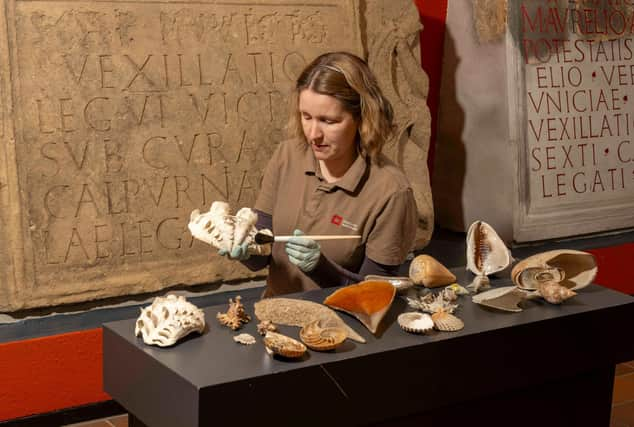Saved from a skip: English Heritage recovers globally important shells from Captain Cook’s fated third voyage


The collection contains more than 200 specimens, including an extinct species and several believed to have been sent back from Cook’s ill-fated third voyage.
A remarkable record of Britain’s role in global trade and its colonial reach in the late 18th Century, the collection was the lifelong passion of Bridget Atkinson (1732-1814), who had far-reaching connections and amassed more than 1,200 shells from across the globe.
Advertisement
Hide AdAdvertisement
Hide AdIn the 1980s, 200 of the shells were thrown out during a clear-out and thought to be lost forever, but it has now been revealed that a passing lecturer, Dr John Buchanan, rescued the shells from a skip.
Donated to English Heritage by the Buchanan family, the shells have now returned to the museum at Chesters Roman Fort and been reunited with a giant clam that was previously the only remaining piece of the collection.
Dr Frances McIntosh, English Heritage’s Collections Curator for Hadrian’s Wall and the North East, said: “We’ve always known about Bridget Atkinson’s collection but had believed it completely lost.
"To discover that the shells have not only survived but been kept safe and loved all this time is nothing short of a miracle.
Advertisement
Hide AdAdvertisement
Hide Ad"At a time when women generally collected shells to decorate their furniture and grottos with, Bridget was collecting them for their scientific and geographical interest rather than their aesthetics.
Dr Tom White, Principal Curator of non-Insect Invertebrates at the Natural History Museum, who has been helping English Heritage to identify and catalogue the shells, added: “Bridget Atkinson was one of the earliest known women to have amassed a scientifically significant shell collection from around the world.
"The collection includes numerous rare species, including New Zealand endemics obtained from her connections to James Cook’s third voyage, the extinct Distorsio cancellina and others, like the giant clam, that are now CITES protected.
"These would have been extraordinarily sought after in 18th Century Britain, during the golden age of shell collecting when single specimens could sell for thousands of pounds.”
The collection will go on display at Chesters Roman Fort and Museum in Northumberland from Wednesday March 13.